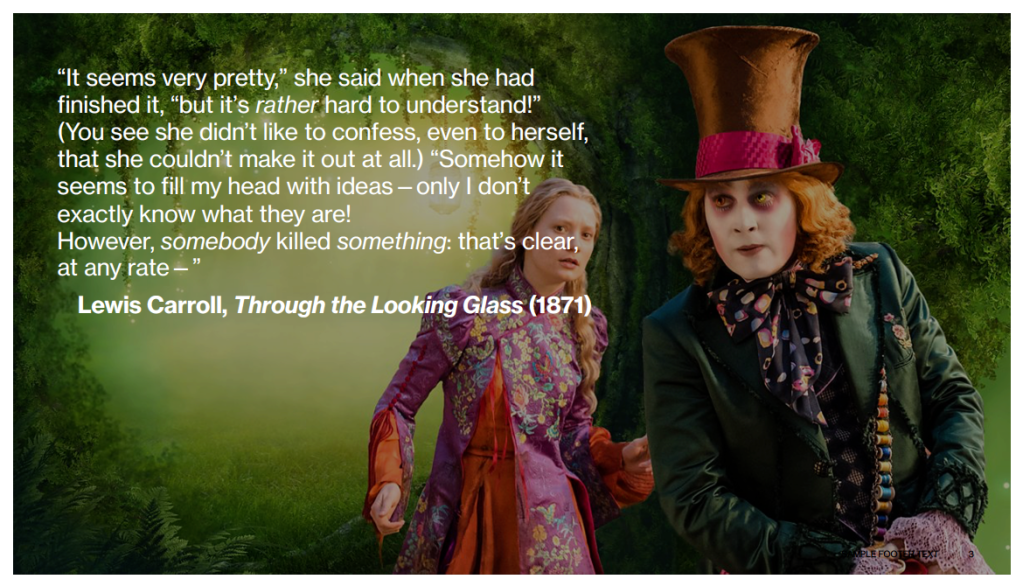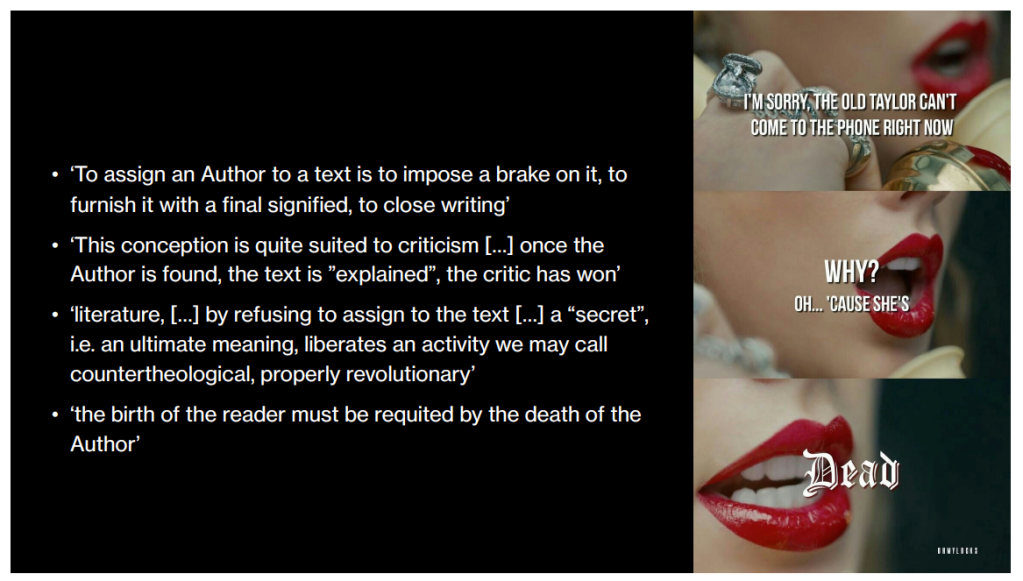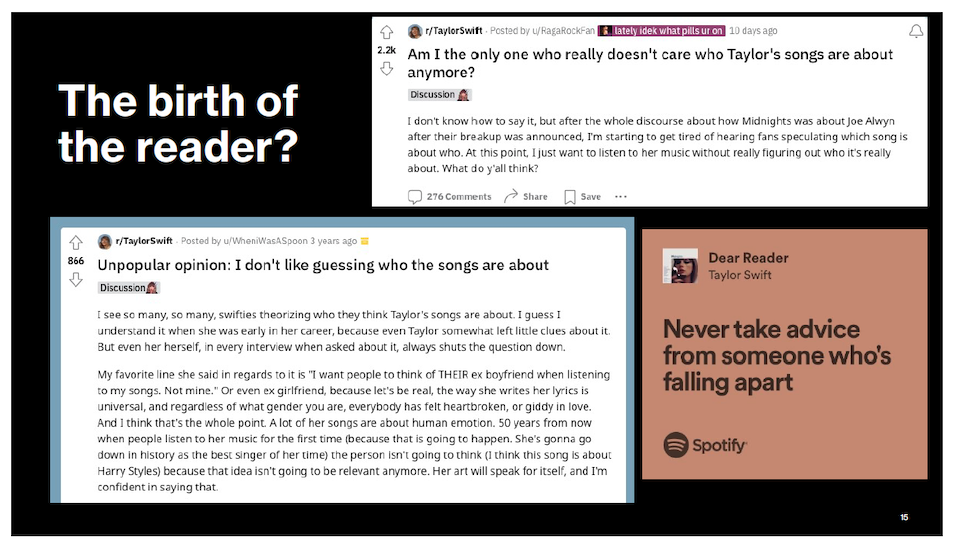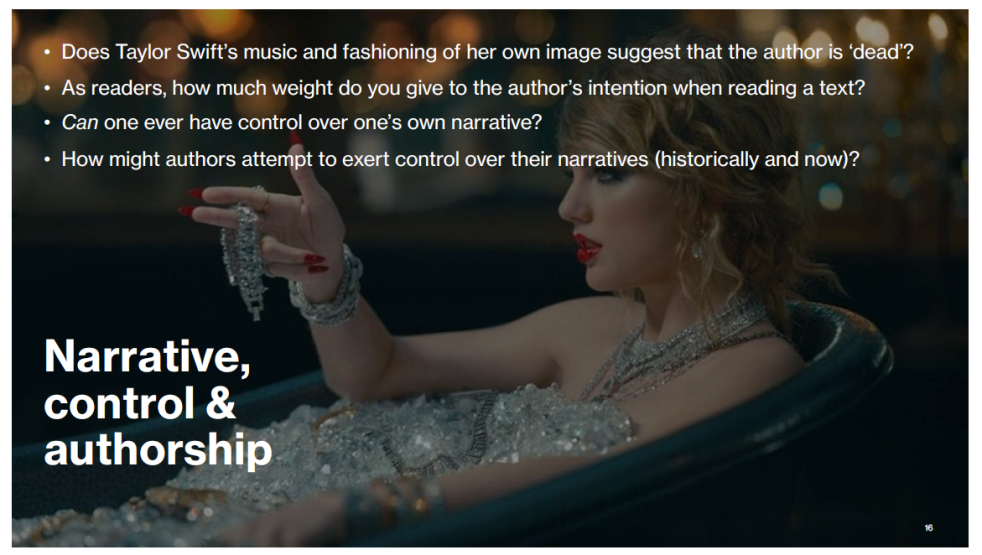by Birgit de Schrijver
In the third seminar we looked at the role of the author. More specifically the influence of the author when it comes to our interpretation of certain texts (or songs).
When looking at “Jabberwocky” by Lewis Carroll, we came across many nonsense words which made it difficult to understand the poem. However, this gave us a lot of freedom in interpreting it since there didn’t seem to be a right or wrong meaning. Where Jabberwocky gave us a lot of freedom, part of this was taken away by Carroll’s “Through the Looking Glass”. Here, Humpty Dumpty gives us (sometimes confusing) explanations for the nonsense words. Unfortunately, by telling us what something means, we are deprived of our own interpretation. We discussed that often the explicit interpretation of the author limits the interpretation of the reader.

One of the questions related to this was ‘How does it make you, as the reader, feel, when an author explains how to read his or her text?’ On one hand a ‘guide’ can be helpful for example when knowing how to pronounce someone’s name. On the other hand, it can sometimes ruin the reading experience when an author had given too much specific information (e.g. J.K. Rowling explaining how wizards poop!) The author giving their explicit interpretation can feel restricting for the reader, as if their interpretation is the only correct one.

When discussing the songs for this seminar (Dear Reader, Call it What You Want, This is Why We Can’t Have Nice Things), we agreed that each song had a very different ‘attitude’, but that they are all a way for Taylor Swift to connect with her audience. Each song is a balancing act of taking and giving control. She has control of her own interpretation, but also allows the listener to have their own interpretation. A common pitfall, however, is being too aware of the interpretation of the author (or in this case Taylor Swift) and therefore being unable to leave room for your own interpretation.

It isn’t always necessary to know what the author intended, even though many Swifties make it their goal to find out who and what her songs are about. This idea of the intention or meaning of the author is greatly discussed in Wimsatt & Beardsley’s essay “The Intentional Fallacy” (1946). There are many ways to find out what an author could have meant, or what the writing is about (explanatory notes, looking at the author’s (known) literary influences, asking the author directly). It can be interesting to be aware of the intention of the author, but the reader plays a role that is just as (or even more) important. Which is why this is also tied to Roland Barthes’ essay “The Death of the Author” (1967). The author, in some way, has to die in order for the reader to come alive and interpret and experience the text/song however they would like.
See below for more detailed notes.


Thanks again from Wisconsin, USA for making this a public page! I enjoy following your seminars and learning new ways to discuss TS on a more intellectual level. I went from not understanding the hype, to watching her Netflix Doc, reading your intro article, and going through her music catalog, which made me a full fledge Swiftie. What a talented, and wonderful human she is.
Thanks, this made my day!